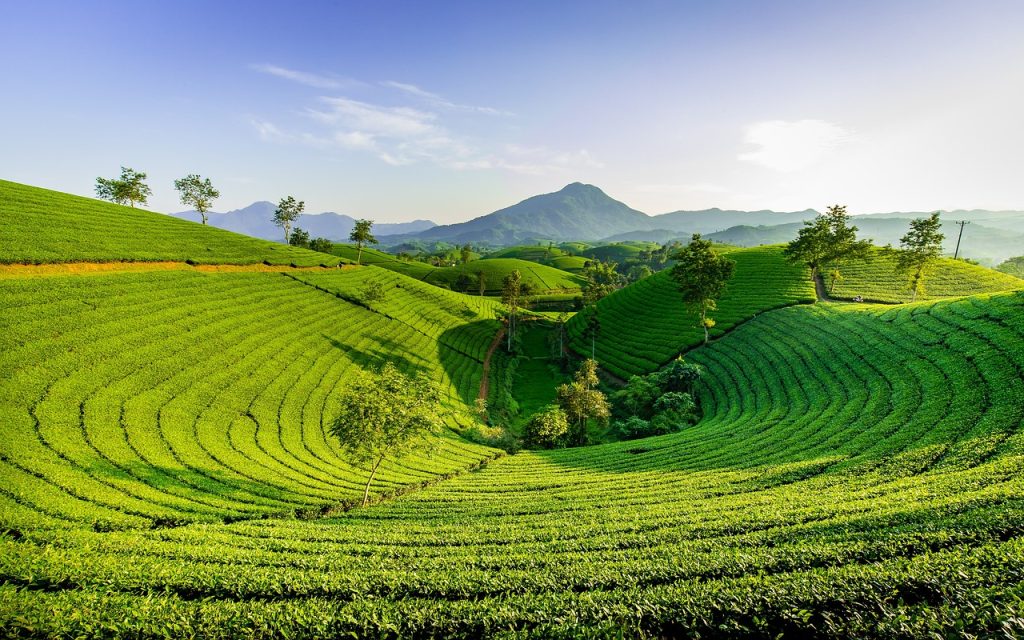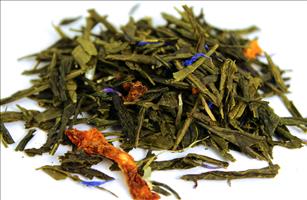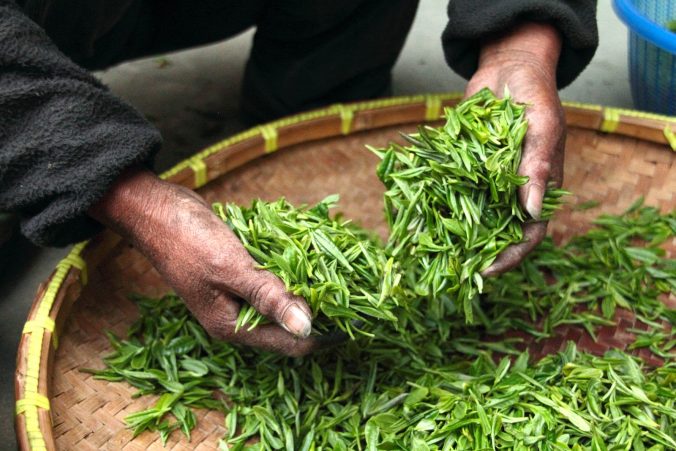Table of Contents
- The Importance Of Natural Farming Methods
- Hand-Harvesting And Careful Processing
- Preventing Oxidation And Preserving Flavor
- Purifying Water For Optimal Taste
- Identifying Truly Exceptional Green Tea
- Frequently Asked Questions
- How Much Caffeine Is In Green Tea Compared To Other Types Of Tea?
- Can Green Tea Help With Weight Loss?
- What Is The Best Way To Brew Green Tea To Maximize Its Health Benefits?
- Are There Any Negative Side Effects Of Drinking Too Much Green Tea?
- How Does The Quality Of The Water Used To Brew Green Tea Affect Its Taste?
- Conclusion
As a green tea expert, I have spent countless hours studying and tasting various types of green tea in order to understand what makes for a truly exceptional cup.
While there are many factors that can contribute to the quality of green tea, some stand out as particularly important.
By paying attention to these details, one can ensure that they are drinking only the best possible green tea available.
The Importance Of Natural Farming Methods
As a green tea expert, I can attest that the quality of green tea greatly depends on how it is grown. One of the most important factors to consider is the farming method used.
Organic farming methods are preferred because they do not involve the use of harmful pesticides and chemicals that could affect the quality of the tea leaves. The benefits of organic farming cannot be emphasized enough when it comes to producing high-quality green tea.
The absence of synthetic fertilizers and pesticides means that there is minimal contamination in the soil, water, air, and ultimately, in our cups. In contrast, conventional farming practices often rely heavily on these chemicals which can lead to lower yields and poorer quality teas.
Pesticides have been found to have detrimental effects on tea quality by altering its taste profile or aroma. They also leave residue on the leaves which may end up being brewed with your tea.
By choosing organic farms for sourcing your green tea, you ensure that you get a pure product that has retained all its natural flavors and nutrients without any external contaminants.
Hand-Harvesting And Careful Processing
As we learned in the previous section, natural farming methods are essential for producing high-quality green tea. However, equally important is the way the leaves are harvested and processed.

Hand harvesting has many benefits compared to machine harvesting. First of all, hand-picked leaves ensure that only the youngest and most tender parts of the plant are used, resulting in a better taste and aroma. Additionally, by selectively picking leaves at different times during the growing season, farmers can control the levels of caffeine and other compounds in their tea.
Challenges arise when it comes to processing these hand-picked leaves. Careful processing requires a great deal of skill and patience as each step must be done with precision. The goal is to preserve the delicate flavor profile while removing any impurities or defects from the leaves. One misstep could result in an inferior product that does not meet consumers’ expectations.
This attention to detail may seem tedious but it is necessary for creating a truly exceptional cup of green tea. In summary, good green tea depends on both natural farming methods and careful handling throughout its production process. By utilizing hand-harvesting techniques, farmers can produce higher quality tea with more nuanced flavors than those made using machines. Although there are challenges involved in carefully processing these delicate leaves, it is worth it for ensuring that every sip delivers a unique and satisfying experience for tea drinkers everywhere.
Preventing Oxidation And Preserving Flavor
To truly appreciate the delicate flavor of green tea, preventing oxidation and preserving its freshness is essential. When tea leaves are exposed to oxygen, they begin to lose their natural flavors and aromas. This process can be prevented by using proper storage techniques.
Maximizing freshness starts with selecting high-quality loose leaf green tea. Once you’ve found your desired variety, it’s important to store it in an airtight container away from light and moisture.
Avoid storing your tea near spices or strong-smelling foods as it can absorb those odors.
When brewing green tea, use freshly drawn cold water that has not been previously boiled. Heat the water until it reaches 160-180°F before steeping the leaves for no more than two minutes.
Proper brewing will enhance the subtle notes of grassiness and sweetness found in good quality green teas.
By following these simple steps when buying, storing and preparing your green tea, you’ll ensure maximum enjoyment of its flavorful complexities without any unwanted bitterness or staleness creeping into the cup.
Purifying Water For Optimal Taste
When it comes to making good green tea, purifying water is crucial. The taste of the tea largely depends on the quality of the water used in brewing. Water filtration systems are readily available and can easily remove impurities that affect the flavor.
It’s important to note that tap water may contain chlorine or other chemicals that will negatively impact the taste of your green tea. Using filtered or bottled water instead ensures a clean and pure base for your brew.
Additionally, using cold water helps preserve the natural flavors and aromas of the leaves.
Brewing techniques also play a role in optimizing the taste of green tea. It’s recommended to use water at a temperature between 160-180°F (71-82°C) to prevent oversteeping and bitterness.
Steeping time should be around 2-3 minutes depending on personal preference, as longer steep times can result in a bitter taste.
By following these tips, you’ll be able to savor all the delicate flavors and benefits of high-quality green tea.
Identifying Truly Exceptional Green Tea
After purifying the water, it’s time to identify truly exceptional green tea.
Good green tea is not just about its taste but also its aroma and color. The best quality green teas have a bright green hue that indicates freshness.
When selecting your tea, look for flavor notes like floral, nutty or grassy. These flavor notes indicate the type of tea leaves used in making the beverage.
For example, Matcha has a more vegetal flavor while Sencha has a grassier note. Jade Cloud from Mighty Leaf Tea has an earthy tone with hints of chestnut.

Brewing techniques can make all the difference when it comes to enjoying good green tea. Steeping temperatures vary depending on the variety you choose.
It’s essential to follow instructions carefully to avoid bitter or bland tasting brews. With proper brewing techniques and finding the right match for your palate, you’ll enjoy every sip of high-quality green tea.
Frequently Asked Questions
How Much Caffeine Is In Green Tea Compared To Other Types Of Tea?
As a green tea expert, I can tell you that the caffeine content in green tea varies depending on the type and quality of the tea leaves used.
On average, green tea contains about 35 milligrams of caffeine per cup, which is less than black tea but more than white tea.
However, it’s important to note that the health benefits of green tea go beyond its caffeine content. Green tea is packed with antioxidants and polyphenols, which have been linked to improved brain function, lower risk of cardiovascular disease, and reduced inflammation.
So if you’re looking for a healthy beverage with moderate caffeine content, green tea is definitely worth considering.
Can Green Tea Help With Weight Loss?
Green tea has been known to aid in weight loss due to its effects on metabolism and appetite suppression.
The active ingredient, catechin, found in green tea is believed to help increase the body’s metabolic rate, which can lead to burning more calories throughout the day.
Additionally, green tea has been shown to reduce appetite by increasing levels of hormones that promote feelings of fullness.
It is important to note that not all green teas are created equal when it comes to weight loss benefits.
Look for a high-quality green tea with a bold flavor and aroma, as these characteristics may indicate higher levels of catechins.
What Is The Best Way To Brew Green Tea To Maximize Its Health Benefits?
To maximize the health benefits of green tea, it is important to pay attention to brewing techniques.
The ideal water temperature for steeping green tea is around 175°F to prevent bitterness and astringency while bringing out the delicate flavor profiles.
It’s recommended to use fresh, filtered water and steep the leaves for no more than two minutes to avoid over-extraction.
Additionally, using high-quality loose leaf tea can enhance the overall taste experience.
By following these tips, you can ensure that your cup of green tea not only tastes great but also provides maximum health benefits.
Are There Any Negative Side Effects Of Drinking Too Much Green Tea?
As a green tea expert, it’s important to address the potential health risks associated with excessive consumption.
One concern is that consuming large amounts of green tea may lead to liver damage. However, this risk can be mitigated by drinking in moderation and choosing high-quality varieties from reputable sources.
Additionally, there are differences between Japanese and Chinese green teas in terms of flavor profile and processing methods.
Ultimately, finding good green tea involves considering personal preference and ensuring its quality and safety for consumption.
How Does The Quality Of The Water Used To Brew Green Tea Affect Its Taste?
Water quality is a crucial factor in brewing green tea, as it directly impacts the taste and aroma of the final product. The best water for brewing green tea is pure and fresh, with no added chemicals or impurities that could affect its flavor profile. Ideally, one should use spring water or filtered tap water to brew green tea.
In addition to water quality, brewing temperature also plays an important role in achieving the perfect cup of green tea. Water that is too hot can result in bitter-tasting tea while water that is not hot enough may produce a weak infusion. Here is a great video ofbrewing green tea:
As a green tea expert, I highly recommend paying close attention to both water quality and brewing temperature when making your next cup of green tea for the ultimate experience.
Conclusion
In conclusion, as a green tea expert, I can say that the quality of green tea depends on several factors.
It is important to note that green tea contains less caffeine than black or oolong teas but still provides an energy boost.
While it may aid in weight loss when combined with healthy habits, drinking too much can lead to negative side effects such as insomnia and stomach issues.
To maximize the health benefits of green tea, it’s best to brew it at a lower temperature for shorter periods of time.
Using high-quality water will also enhance the taste of your green tea.
Overall, good green tea should have a fresh aroma and a smooth taste without any bitterness.
So next time you’re brewing up some green tea, keep these tips in mind for a truly enjoyable cup!
